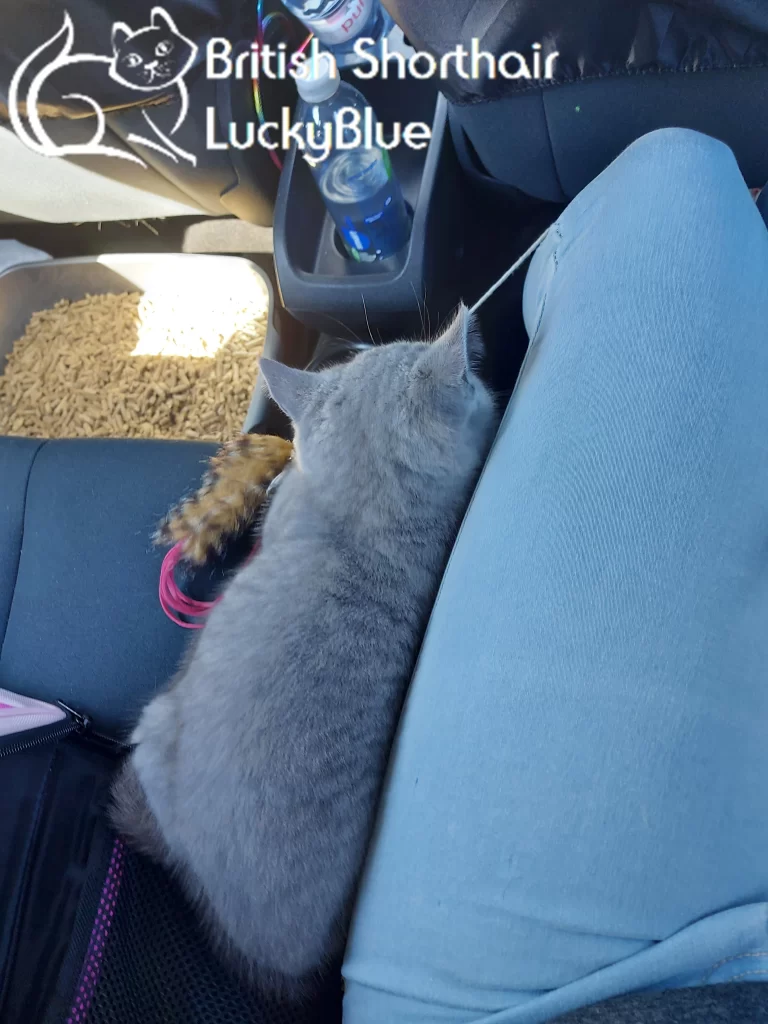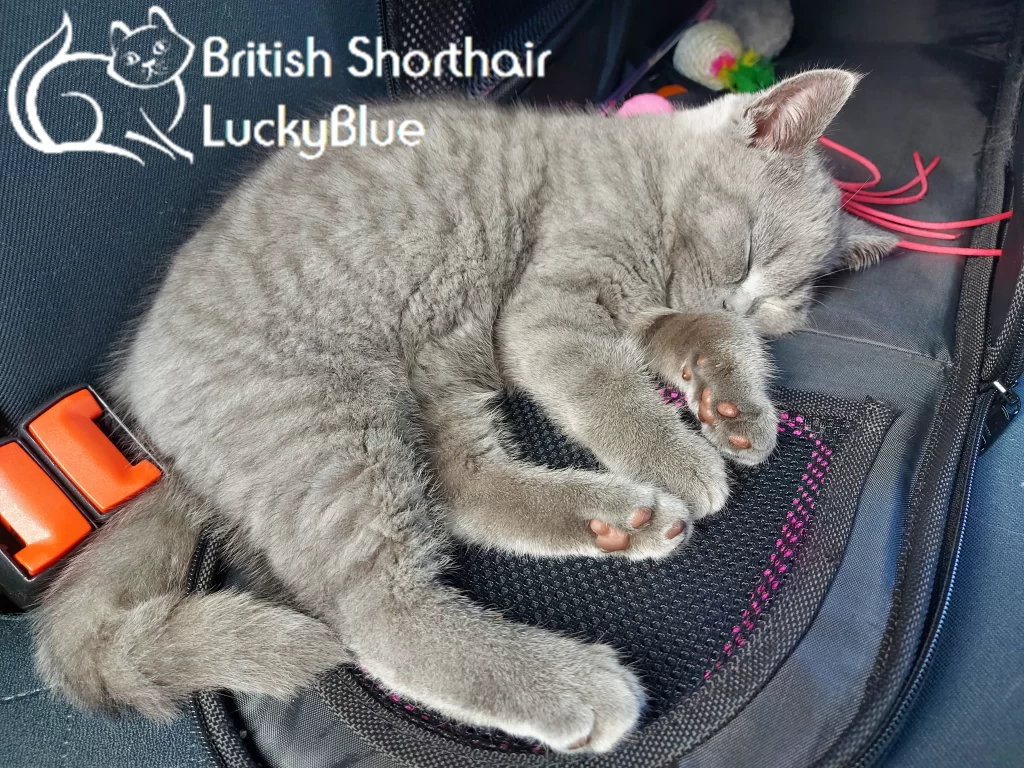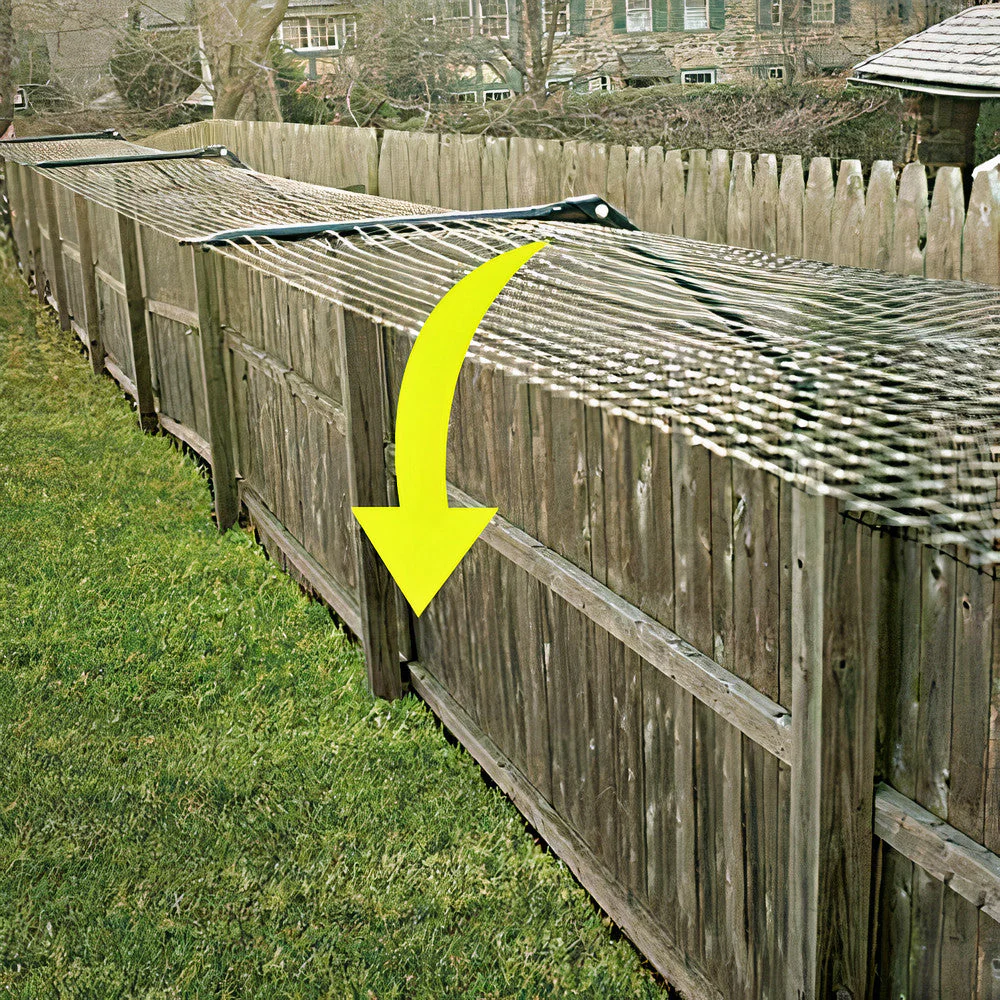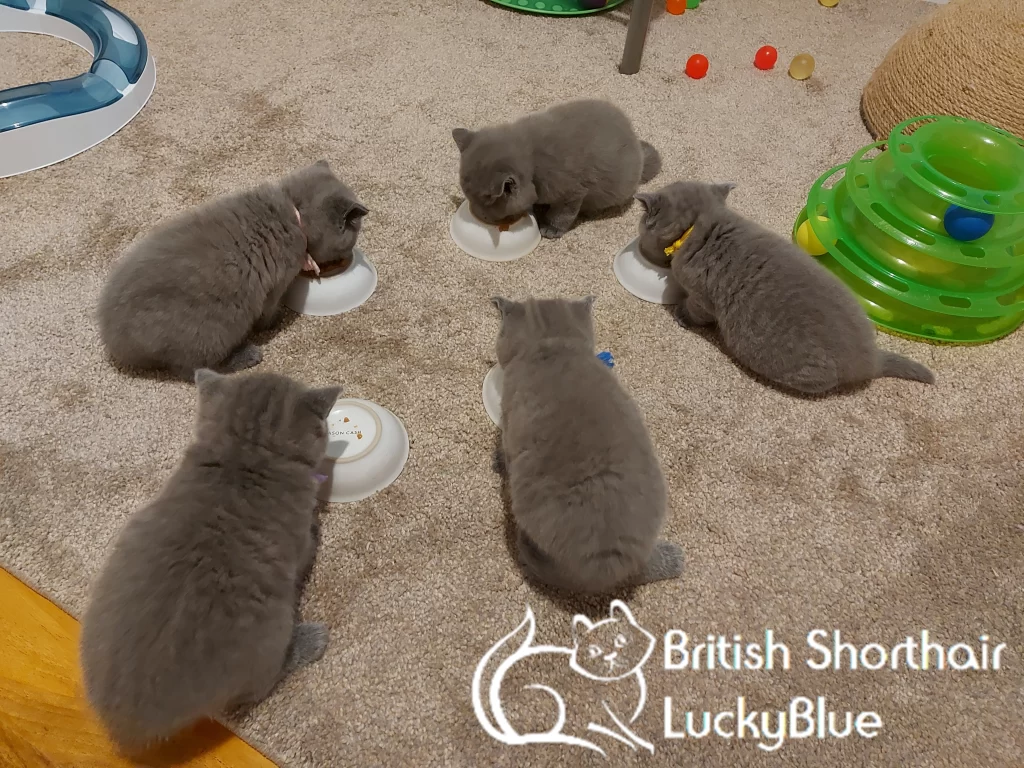Bringing kitten at home and their first week with you
A new home with new peoples, new sounds, new spaces and new smells can be a scary place for a young kitten, but there are things you can do to make the transition easier. Your new kitten left behind a loving mother, playful siblings and a familiar environment so he needs an extra special care for feew days when being introduced to his new surroundings and new family. The first few days at a new house can be a difficult time and you will also need to be patient even you are very enthusiastic.
Your cat will settle in to the new house on their own terms, in their own time and will thank you for letting them do so.
Collecting the kitten from breeder is really exciting for you, but it’s a big change for kitten as they leave their home, mother and siblings. There’s a lot to consider when it comes to welcoming a new kitten. You’ll need to be fully prepared before collecting them and know how to approach their first day and night with you, including what to feed them.
Your kitty needs to feel comfortable with you as soon as possible. At home to breeder before take him start your relationship by interacting with him on his own turf where he feels safe and secure. Spend time playing and cuddling him before taking him away from his familiar environment at least one hour.
You’ll need a cat carrier to carry your kitten in too, and you need to have, take some of the food from breeder with what him was been feeding. Before collecting find a vet and make an appointment for a check-up a few days after bring him into new home.


The ride home should be as pleasant as possible and safety and secure. Place the scented towel/toys in to cat carrier and gently place your kitten inside. If he resists, remove the top of the carrier rather than nudging him through the door.
Your kitten may need to travel in a car for visits to the vet, so it’s important they get used to it. If you didn’t collect them in a car, it’s worth taking them on a car journey during their first week with you.
Start by making sure they feel comfortable staying in the cat carrier, then introduce them to the the car without the engine on. Once they are settled, start to familiarise them with the engine and motion.


Make sure you’ve kitten-proofed your home and stablish one room with everything they’ll need, including a bed, food and water bowl, litter tray and toys. This room should ideally be a spare room or another room that isn’t too busy.
When you arrive at home open the door of the carrier and allow the cat some time to come out willingly. Place fresh water, food, and a litter box near the entrance of the carrier. Allow the kitty to come and go at will. If he refuses to venture out from cat carrier after 30 minutes, gently pick him up and show him the food and water bowls and litter box. If the kitten is very tiny, a small litter box with low sides may be necessary at first. Duplicate the type of litter used by breeder.

First days they will prefer a quiet room, spare room or another room that isn’t too busy will be ideal for them where they will fell save and you can visit and sit with them from time to time while they get used to their new surroundings. If you have space can be you bedroom and after few day open the door to explore in to new big environment.
They will need the time and space to make sure that their surroundings are safe. If you have already friendly cats they might be comfortable and show gradual to the kittens and see the behaviour.
Give him lots of time to become familiar with this room before giving him freedom to explore the entire house.
Please do not let kittens and cats in to your bathrooms because of smell, chemical, laundry or you can forgot to close or flush the toilet.
They need a clean environment to not disturb their tummy which will cost you to vets.
Your cat needs time to settle in and feel comfortable before meeting too many others so try and limit the number of visitors you have over in the first few days. It may be easier for your kitten if you allow them to get to know your home one room at a time, always returning to their “safe room” at night. You may find this process very quick and easy and they will soon be settled and roaming freely throughout the home.
During the first week, it’s best to be taking them to the vet and. It’s important to know how to introduce your kitten to friends, family, children and other pets, our advice is gradually in days, weeks.
British Shorthair are indoor cats and even they’re booster vaccinat we don’t recommend to let them outside.
If you wish to let them out be carefully how you handle their first adventures outdoors becouse are many issues for there health like liking water, eating insects, cars and many others. If you realy want to go outside the best solutions is your own garden and under your supervision few minutes. Around eight months old they can to go outside under supervis but once outside they will cry after to let them outside each day.
Keep your garden kitten-proofed.

In case kitten goes outside unsupervised (not recommended) they must have microchip or a well-fitting collar and identification tag.
Most important kitten need o be neutered or spayed to prevent unwanted litters and leave the door open so they can see how to get back inside.
For you let’s take step by step.

First day for your new kittens is very sensitive to new surroundings, so it’s important to be careful when welcoming him to your house. Following belows tips will help things less overwhelming for your kitten.
With the new sights, sounds and smells in your home, and the separation from his mother, may make your kitten feel stressed. So keep your house very calm and quiet. If you have a spare room or another room that isn’t too busy is the best options for the first day’s.
When you arrive home, put the cat carrier in the room you’ve prepared and open the door. Let them come out to explore in their own time and resist the urge to cuddle them straightaway.
After your kitten’s explored their room, they may be ready for a nap so show them their bed rather than trying to play with them. Make sure they are also aware of where their litter tray is located too.
Your kitten may be shine initially but will soon want to explore. If your home’s kitten-proofed, allow them to do this while watching them or keep them safe in their own room, with windows and plenty of social contact, for the first few days.
Until your kitten’s four months old, they shouldn’t be left alone for long periods of time during the day. Get them used to being alone by leaving them for five minutes each hour and gradually extending it.
With some breeds our recommendations and it may be beneficial to consider to take two kittens for companionship like in our live.
Their territory need organised in separate areas for feeding, resting, cleaning and playing. Watch how your kitten uses the space and make changes if necessary so they’re comfortable. You may need their litter tray move further from their food.
Kittens are very disturbed during their first night and it’s normal for them to cry during the following few nights too.
Provide a safe place to sleep a cosy bed in a quiet place with a blanket and make sure they have access to their water, food and litter tray. Turning out the light will help to establish your kitten’s sleep patterns, but on the first night you might want to leave a night light on while they adjust to their surroundings.
For their health and wellbeing, kittens need lots of sleep in a quiet place where they can relax and feel secure. Your kitten may sleep for around 15/20 hours on a day and may still need as much as sleep as an adult cat.


Any sudden changes of food can cause digestive upsets and stress. For the first weeks, stick to the same diet, same food and feeding routine as their previous owner, breeder recommendations. Slowly you can switch to a different food, if you choose something else and kitten food suitable for their age but dont try to many variety in a shorter period.
Provide quiet area to eat were your kitten will feel secure, away from where you and any other pets eat. Cats don’t like to eat too near their litter tray and should always have fresh water available (water fountain we recommend). It’s important to keep water bowls away from their food to avoid contamination.
Our recomandations is to have only ceramics bowls.
Don’t give your kitten milk or table scraps, all dairy products are prohibited.

After weaning, kitten’s lose the ability to digest the sugar in milk and cow’s milk can give them diarrhoea. If you feed them scraps from your meals they may begin begging or become ill or overweight from eating too much of the wrong foods.
With stress of moving kitten at the beginning will not eat to much, but their appetite should return once they’re settled. Kittens don’t eat large meals, they eat several small meals on a day. If you are concerned about your kitten eating habits, consult a vet.
Your kitten’s diet should contain all the nutrients they need for each phase in their development. So you’ll need to adapt the food and rations you provide as they grow. Kittens they have different food from adult cats.
Kittens are growing rapidly, and their digestive and immune systems are developing. Kittens need a diet with a higher energy and protein content, plus immune-boosting nutrients and the right balance of vitamins and minerals.
To help your kitten grow and stay healthy, it’s vital to provide food suitable for their age, lifestyle and specific nutritional needs. They need the right balance of proteins, fats, carbohydrates, vitamins and minerals.
Kitten’s digestive system is very delicate and can be upset by sudden changes. When yoy want to change your kitten’s food, it’s important to make the transition carefully and slowly to avoid digestive issues. Introducing a new food should be done slowly, to avoid any potential stomach upsets.
Socialisation should start as early as possible, to avoid any unwanted behaviours and help them develop into confident.
While kittens are often seen to be independent, it’s important to guide their behaviour early on in life. At first, kittens are socialised by their breeder, as well as their mother, litter mates by follow their example when it comes to habits and behaviours. Once they move into your home, you’ll need to complete their socialisation and by doing so limit unwanted behaviours and help them settle in to their new life.
Kitten will learn most of its social behaviours in the first three months. Sooner you will introduce your kitten to new experiences is better. If kitten is happy to run up to you, seeks attention and rubs up against you it means that they have had a good basic socialisation. If they are shy and try to run away when you approach, you will need to start from the beginning.
New sounds can startle kittens and make them anxious, so keep introducing them to new noises while reassuring them are save. This could include sounds such as a washing machine, music or hoover.
New terrains will help them to become acclimatised and keep them busy like stairs, indoor cat tree and different cat toy.
Gently accustom your kitten to being picked up and handled all over their body and spend time playing games that gently encourage your kitten to display natural behaviours such as stalking, pouncing and swiping.
If your kitten has a negative experience with a person or animal the effects can be long-lasting. It’s important you understand how to make each introduction so your kitten feels comfortable and save. Your kitten may be comfortable with you but their natural inclination to retreat and hide may remain when they encounter new people.
Your kitten’s first few days and weeks with you will influence how they integrate with your family and whether they grow into a happy, sociable cat.
Many kittens learn to use a litter tray by watching their mother. Make sure the litter tray is somewhere quiet, always accessible and away from their food and water bowls.
One of the most active times for cats is dusk and night. If you playing with them at this time will help to tire them and be ready for bedtime. Another active time for cats is dawn.
Instal there bed in the place you intend to stay for a long period because once they’ve begun sleeping somewhere it won’t be easy to change the location.
Make sure your kitten has everything they need such as access to the litter tray, fresh water, food, or to favourite toy.
After interacting with your kitten your scent will replace the smells associated with his old home and you will become his source of security. He will find comfort in having you around, but you can’t always be with him so your kitty must learn to stay at home alone. Leave the food bowl, water bowl, litter box, toys, and a resting area full and clean. Remember that cats prefer to have their food and water separated from the litter box, so designate a separate feeding area, litter box area, and resting/play area. Make sure the area is cat-proofed by removing things that may cause injury like sharp objects, string, electrical cords, rubber bands or other items that could be swallowed.
Cats are natural explorers and independent by nature and on your leve time will search and sleap most all time.
Encouraging safe and appropriate play activities from the first day in your home will make life much more pleasant for you and your cat. Most of the physical activity of an outdoor cat is focused on the hunt. Indoor cats do not have to hunt for food, so interactive play that satisfies the hunting instinct makes for a happy cat. In fact, stalking and pouncing are important play behaviors in kittens that facilitate proper muscular development, so these activities should be encouraged within reason.
Provide predatory play sessions by playing together with wands, movable toys, or small lights. Chasing a toy attached to a wand or batting around a soft ball gives the cat needed outlet for his hunting instinct. Avoid toys that are small enough to be swallowed becouse these items can cause serious intestinal problems if they are swallowed.
Cats climb trees in nature and lounge on the branches, so this instinct must be satisfied, too. Comfortable, accessible bedding in a quiet location will encourage the cat to sleep in his own quarters, but cats do like to sun themselves on the back of the best chair in the house.
Safe climbing alternatives and scratching posts will help deter destruction of furniture.
Some kittens not only face a new home, they also face a new family that includes other pets as well as humans. Some kittens may show fear and defensive postures toward other pets in the home, but most young kittens are simply playful and inquisitive around other animals. In fact, existing pets that have an established territorial instinct for the home may pose more of an aggressive problem than the new in house. Keep your cat or dog on a leash or have someone hold them when introducing the new kitten. Allow the pets to explore each other and intervene only if you detect signs of aggression. Usually, gently correcting inappropriate behavior on the part of the new or existing pet and reinforcing desired responses will diffuse the situation, but be prepared to use the leash and retreat quickly if tensions escalate.
The presence of other pets in the house makes confining the kitten to a restricted area. Kitten needs personal space where will feels safe and secure. Feeding and sleeping should be in separate locations, at least for a while. With time, both the new kitten and your other pets will learn the other’s behavior patterns and signals while developing mutual respect and trust.
If the existing pet is an adult cat instead of a dog, there may not be as much difficulty for the new kitten. Most adult cats are fairly tolerant of kittens as long as their territory is respected and they don’t feel neglected. It’s important to spend quality time with both the new and the resident cat. In fact, during the transition period it is a good idea to spend extra time with the older cat.

